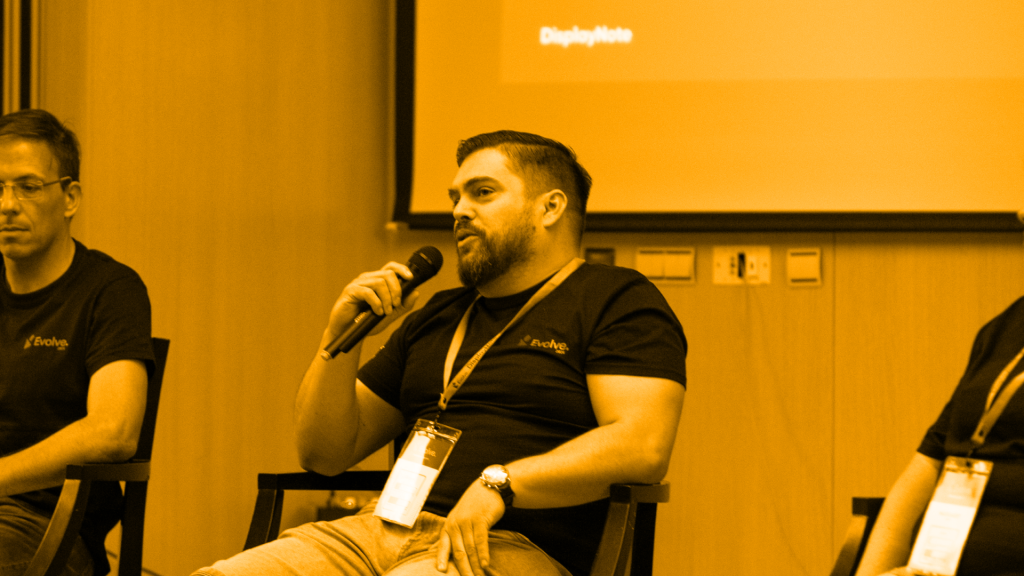
Crisis, Change & Collaboration: Does Remote Working Work?
 Julie Adams
•
Nov 12, 2020
Julie Adams
•
Nov 12, 2020
Prior to this year, over 50% of companies globally prohibited working from home. Eight months into the depths of a global pandemic, around half of the workforce are estimated to be working remotely. With social distancing and government restrictions in place for the foreseeable future, questions have arisen on the future of the workplace; will it return to ‘normal’ – or is remote working here to stay?
In a 2017 survey, 3 in 4 people expressed a preference for a mix of office and remote-based working.
This raises the question of why so many organizations have been reluctant to adopt the working model before now and whether it’s a viable strategy long-term?

Mixed Evidence
In 2015, Stanford Economist Nicholas Bloom published a paper in the Quarterly Journal of Economics. In this research, entitled ‘DOES WORKING FROM HOME WORK? EVIDENCE FROM A CHINESE EXPERIMENT*’, Bloom presented evidence from a randomized control trial on 1,000 employees from a Chinese travel company called Ctrip. The study found a 13% increase in productivity following nine months of working from home, which equated to almost an extra day of output per week. This was coupled with a 50% decrease in staff turnover rates. The study results were so successful that, unsurprisingly, Ctrip implemented remote working out across the whole company.
As encouraging as these results are, the principles don’t translate as neatly into the pandemic landscape as we’d imagine; this is the result of four distinctive factors: children, space, privacy, and choice.
“Everyone assumes I would be gushing over the global rollout of working from home,” says Bloom, who is also the William D. Eberle Professor of Economics in the School of Humanities and Sciences. “Unfortunately not.”
In the study, employees were required to have a designated office in their homes. Unfortunately, not all workers have this luxury, and as a result, many have been forced to work from bedrooms, kitchens, and shared communal spaces during the lockdown.
Where Things Can Go Wrong
“Often, working at home is [allowed] because workers are demanding it, but, with no training for managers or employees, companies discontinue it and say it’s not working for them,” Jane Meister, founding partner of Future Workplace.
Research has suggested that there are organizational barriers that prevent successful remote working. There are several theories as to why issues arise:
- Employers allow remote working without providing proper training or resources.
- Supervisors are untrained in how to manage and monitor remote workers effectively.
- Some supervisors are uncomfortable with employees working offsite due to a lack of control or low trust levels in their employees.
- Employers find that remote workers are not as productive off-site as they are on-site.
Distance Matters

Judith Olson, a distance-work expert, and professor at the University of California Irvine (UCI) conducted research that further supports the hypothesis that certain conditions must be met for remote working to be successful, especially in industries that rely on workers collaborating.
In the study, Olsen, alongside her husband and research partner Gary Olsen (2000), found that those most likely to experience successful remote working are those:
- Have previously worked with others at the primary worksite before.
- Have similar work styles.
- Have a good relationship.
- Have access to high-end technology that helps them collaborate.
- Are skilled in using that technology.
They found, however, that a situation where all of these factors align is rare. And when missing, the result is “strain on the relationships among teammates and require[s] changes in the work or processes of collaboration.” Often, teams do not succeed “because distance still matters.”
It is clear that the meeting room will still have a place in the new landscape, what might change is the set-up and technology we find inside it. Companies will have to find the right meeting room solutions that facilitate video conferencing interoperability and enable teams to get the most from the time they do spend together.
The Gender Issue
The issue of childcare is also a significant factor in successful home working; Bloom states that sufficient childcare must be in place for home working to be productive. But with many schools adopting distant learning in response to the pandemic, parents have found themselves in a dual role of both teacher and worker, particularly mothers. This might explain the startling statistics presented in the ‘Women in the Workplace’ report by McKinsey & Company earlier this year. Carried out across the UK and US, the report looked at the negative effect between gender and home working:
UK women are 43% more likely to have increased their hours beyond a standard working week than men.
1 in 4 women are contemplating what many would have considered unthinkable less than a year ago: downshifting their careers or leaving the workforce.

This clearly indicates that for remote working to successful work, employers need to create a culture that takes these various factors into consideration. Workplace support should be provided for those who need it, be it policies, working habits, or digital infrastructure. Systems need to be created with a remote-first approach in mind.
An Opportunity for Growth
Deloitte’s Millennial Survey 2017 found a strong relationship between remote work and better employee retention. A higher retention rate means lower employee turnover. This may be related to the increased flexibility and perceived job control an individual feels when given the option of remote working, factors that impact overall satisfaction.
Likewise, remote working also provides an opportunity to rebalance busy schedules and create more time for personal wellbeing and family. In 2018/19, stress, depression, or anxiety accounted for 44% of all work-related ill health cases in the UK, with 54% of all working days lost due to ill health. A shift to a more remote model may serve as a cultural inflection point for individuals and organizations alike to realign their values and practices.
When it’s done right, research has suggested that remote working can actually improve organizational outcomes.
According to a 2017 report by Gallup, State of the American Workplace, and research by 1 Million for Work Flexibility, a remote-work advocacy group:
- Remote workers can be 20-25 % more productive than their onsite colleagues.
- There was a 60% increase in absenteeism after banning remote work when previously allowing.
- Millennials and Generation X members are more likely to sign on with companies that offer remote work.
Striking the Right Balance
Noreena Hertz, the author of The Lonely Century, cautions about the adaption of remote working.
“Bosses need to embrace remote working with caution because what they’ll gain in reduced financial costs, they’ll lose in terms of loyalty and productivity and shared values.”
It’s all about getting the right blend, collaboration in the office, flexibility, and focus at home.

60:40 remote working to office-based is the optimum ratio for engagement with other team members (Gallup, 2017)
As we go forward, technology will play a vital role in carving out what the new safe workspace looks like. Gone are the days of Office, Exchange, and Word. Companies will need to adapt to create environments where interoperability is standard. In person-video hybrid meetings will become the norm. Meeting room technology will need to work with multiple platforms and technologies. Issues like user experience, accessibility, and digital security will be more important than ever.
Tools like Launcher enable employees to walk into any meeting space and instantly launch video calls, presentations, and apps on the meeting room screen without needing to touch a screen or shared computer.
Plus, Launcher’s kiosk mode means meeting spaces can be standardized across the organization to work with the tools they already use, with in-built automatic data clearing features for the security of your data after the meeting ends.
Discover how Launcher can improve the effectiveness of your meetings with a personalized demo
About the Author
This article is written by Julie Adams, a Communication & Content Specialist at DisplayNote. Julie is a writer and science, psychology & music enthusiast.
Want to stay in the loop?
Keep up-to-date with everything DisplayNote – including new releases, job openings, and customer giveaways.
Don’t worry, we’ll not spam you and we’ll never share your email with anyone






